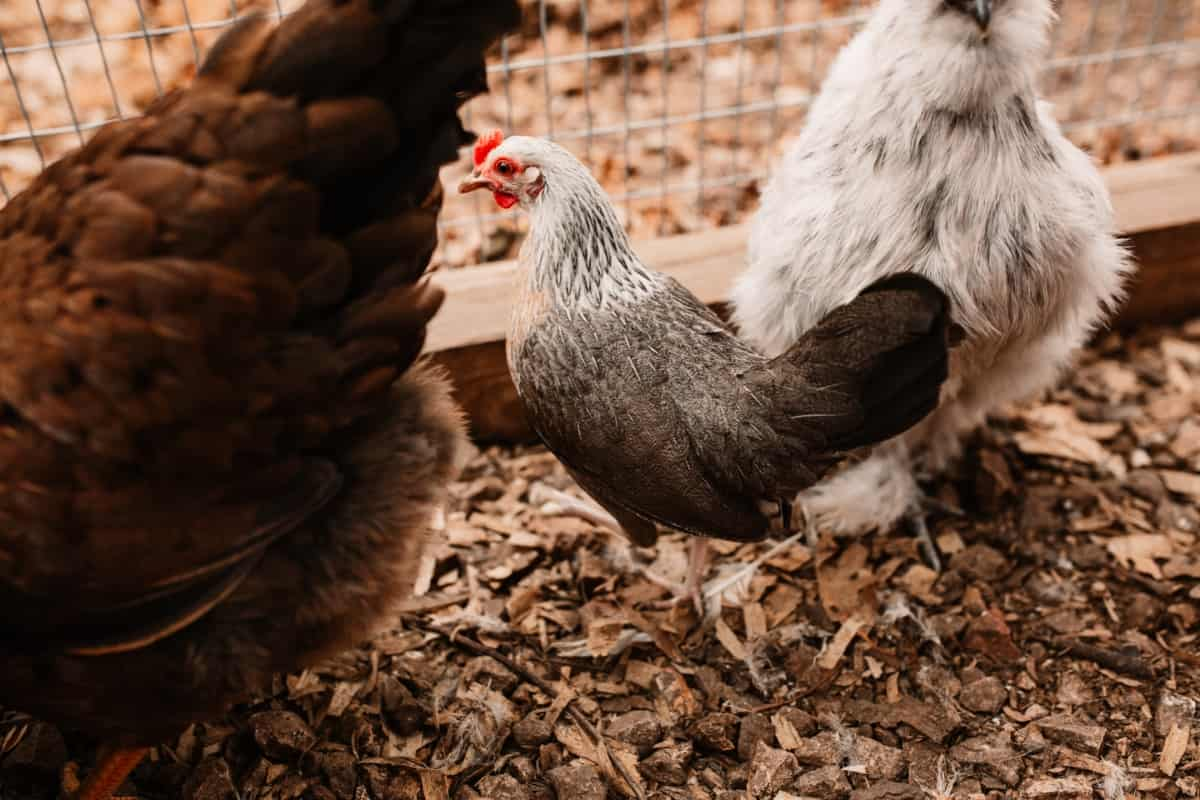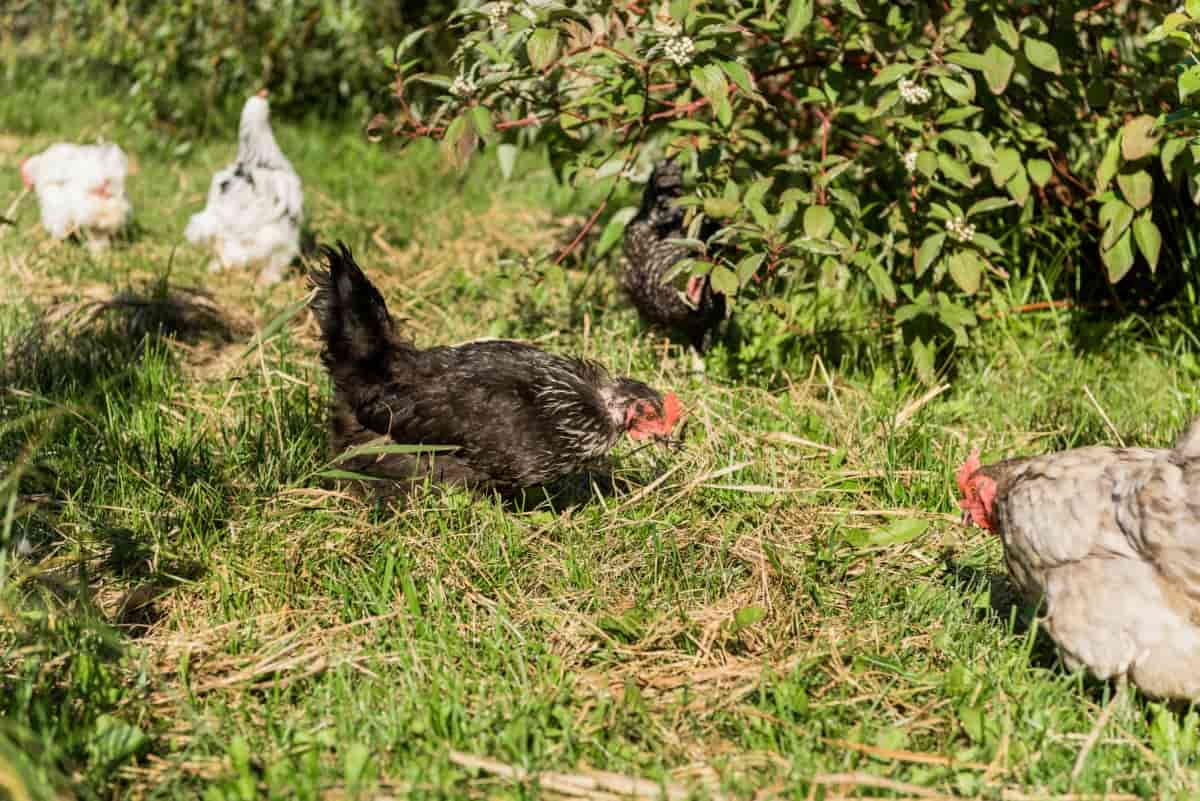Norfolk Grey chickens are a traditional British breed with a rich history. Originating from the Norfolk region of England, these chickens have been prized for their dual-purpose qualities, providing both eggs and meat to farmers for centuries. Their exact origins are somewhat obscure, but they are believed to have been developed from local landrace birds and possibly influenced by Mediterranean breeds brought by sailors.

Raising Norfolk Grey Chickens
Characteristics, Appearance, and Temperament of Norfolk Grey Chickens
Norfolk Grey chickens are known for their striking appearance and practical temperament. They typically have slate-grey plumage with black and white barring, giving them a distinctive and attractive look. These birds have a medium size with sturdy, well-proportioned bodies. Their temperament is generally calm and docile, making them suitable for backyard flocks and small farms. They are known to be good foragers and adapt well to free-range environments.
Benefits of Raising Norfolk Grey Chickens
Dual-Purpose Qualities: Eggs and Meat
One of the primary benefits of raising Norfolk Grey chickens is their dual-purpose nature. They are prolific layers of large, brown eggs, making them valuable for egg production. Approximately 150-220 tinted (pale brown), medium-sized eggs per year from a healthy hen. Additionally, they have well-flavored meat, making them suitable for meat production as well.
Norfolk Grey Chicken Temperament and Behavior Traits
Norfolk Grey chickens possess desirable temperament and behavior traits that make them easy to manage and integrate into a backyard flock. Their docile nature makes them friendly and approachable, even for beginners or families with children. They are generally good-natured towards other chickens and can coexist peacefully in mixed flocks. Their adaptability and hardiness make them well-suited to a variety of climates and environments.
Getting Started with Norfolk Greys
Choosing the Right Birds: Tips for Beginners
When starting with Norfolk Grey chickens, it’s essential to choose healthy birds from reputable breeders or suppliers. Look for birds that exhibit the breed’s characteristic plumage and body conformation, with bright eyes, clean feathers, and alert behavior. Avoid birds that show symptoms of illness or deformities. Consider your specific requirements, whether you prioritize egg production, meat quality, or temperament, when selecting your birds.
Essential Supplies and Equipment
To properly care for Norfolk Grey chickens, you’ll need a few essential supplies and equipment. This includes a suitable coop or housing structure to provide shelter and protection from predators, as well as nesting boxes for egg-laying. You’ll also need feeders and waterers to ensure the chickens have access to fresh food and water at all times. Depending on your setup and location, you may also need fencing or netting to create a safe outdoor space for your flock to roam.
Housing Your Norfolk Greys
Designing the Perfect Chicken Coop
Create a spacious and well-ventilated coop for your Norfolk Grey chickens, allowing at least 4 square feet of space per bird. Ensure adequate roosting bars and nesting boxes, using natural light sources when possible. For chicken coop design Norfolk Grey, employs sturdy materials and secure fencing to withstand weather conditions and predator threats. Regularly clean bedding and maintain hygiene for optimal health.
Safety and Protection from Predators
Protect your Norfolk Greys from predators by using sturdy fencing, buried wire barriers, and predator-proof latches. Install motion-activated lights or alarms for added security. Employ guard animals like dogs or guinea fowl, and avoid leaving food or water sources accessible to predators. Regularly inspect the coop for signs of damage and reinforce weak points to deter potential threats.
Feeding and Nutrition
Optimal Norfolk Grey Chicken Diet for Health and Productivity
Provide a balanced diet for Norfolk Grey chickens, comprising high-quality layer pellets or crumbles supplemented with fresh fruits and vegetables. Also, occasional treats like mealworms or kitchen scraps. Ensure access to clean water at all times and avoid feeding moldy or spoiled food to prevent health issues and maintain egg production.
Understanding Feed Types and Supplements
Choose appropriate feed types tailored to the life stage of your Norfolk Greys, such as Baby chicken starters, grower, and layer feeds. Supplement with calcium sources like crushed eggshells or oyster shells for strong eggshells, and consider probiotics or vitamins to support overall health and immune function.
Health and Wellness
Common Health Issues in Norfolk Greys
Norfolk Grey chickens are generally hardy, but they can still be vulnerable to common health issues such as respiratory infections, parasites (including mites and worms), and egg-related problems like egg binding. Watch for signs of lethargy, abnormal behavior, or changes in egg production, and promptly address any health concerns with proper veterinary care.
Preventative Care and Natural Remedies
Implement a regular cleaning schedule for the coop and nesting boxes, provide clean water and balanced nutrition, and practice good biosecurity measures to minimize disease transmission. Incorporate natural remedies like apple cider vinegar in drinking water to support digestive health and garlic as a natural dewormer.
In case you missed it: Homemade Feed Formulations for Chickens: Cost-Effective Starter to Finisher Feed Recipes

Breeding Norfolk Greys
Selecting Breeding Stock
Choose breeding stock with desirable traits such as strong confirmation, good egg-laying ability, and docile temperament. Avoid birds with hereditary defects or poor health. Select for genetic diversity to maintain vigor within the flock and improve overall breeding outcomes.
Incubation and Hatching Best Practices
Ensure optimal conditions during incubation by maintaining stable temperature and humidity levels. Monitor egg turning and ventilation regularly to promote uniform development. Conduct regular egg inspections to remove any unfertilized or damaged eggs. Provide adequate warmth and humidity during the hatching process and Norfolk Grey Chick care upon hatching to minimize stress.
Norfolk Grey Egg Production
Maximizing Laying Potential
To optimize Norfolk Grey egg production, provide a balanced diet rich in protein and calcium, ensure access to clean water, and maintain a stress-free environment. Encourage natural behaviors like foraging and dust bathing, and provide comfortable nesting boxes with clean bedding. Regularly collect eggs to prevent broodiness and encourage continued laying.
Handling and Storing Eggs Safely
Handle eggs gently to avoid cracks and contamination, washing only if necessary. Store these collected eggs in a cool, dry place away from direct sunlight to prolong freshness. Rotate eggs regularly to maintain quality and prevent spoilage. Always refrigerate eggs promptly if not consumed immediately to minimize the risk of bacterial growth.
Norfolk Grey Eggs per Year
Norfolk Grey hens typically lay around 150-220 eggs per year, depending on factors such as age, genetics, and environmental conditions. With proper care, some individuals may exceed these averages. Regular monitoring of egg production and health can help ensure optimal laying potential throughout the year.
Raising Baby Chickens
Brooding Conditions and Care for Young Chickens
Provide a warm and draft-free brooder with a heat source, like a heat lamp, maintaining a temperature of around 35°C for the first week and gradually decreasing it after that. Offer baby chicken starter feed and clean water, ensuring easy access. Monitor baby chickens for signs of distress or illness and maintain clean bedding to prevent bacterial growth.
Growth Milestones and Development
During the first few weeks, baby chickens will undergo rapid growth and development. They’ll feather out and become more active, transitioning to baby chicken grower feed. By 8 weeks, they should be fully feathered and ready to move to a coop. Monitor their weight gain and overall health, providing appropriate nutrition and environmental conditions to support optimal development.
Price
Norfolk Grey Chicken Price
The price of Norfolk Grey chickens can vary depending on factors such as age, breed purity, and location. However, they typically range from $15 to $30 per bird for pullets or cockerels, while breeding-quality adults may command higher prices.
Norfolk Grey Rooster Vs. Hen
Norfolk Grey roosters generally command slightly higher prices than hens due to their potential as breeding stock and meat production. Roosters are typically priced between $20 to $40, while hens are priced between $15 to $30, reflecting their respective roles in breeding programs and flock management.
In case you missed it: Westphalian Chicken Breed: Origin, Uses, Features, Price, Characteristics, and Life Span

Conclusion
Raising Norfolk Grey chickens offers a rewarding experience for poultry enthusiasts, combining the pleasures of egg collection, meat production, and the joy of tending to these docile and attractive birds. With proper Norfolk Grey chickens care, attention to breeding, and understanding of their unique characteristics, Norfolk Greys can thrive in various environments, providing both sustenance and companionship to those who raise them.
Note: The images presented in this post are intended solely for representation purposes. The images are meant to serve as visual aids and should not be relied upon as accurate representations of their real-life counterparts.
- Feed Your Flock for Less: Top 10 Tips to Save on Chicken Feed
- Ultimate Guide to Ossabaw Island Hog: Breeding, Raising, Diet, and Care
- Hatching Answers: The Top 10 Reasons Your Chickens Aren’t Laying Eggs
- Eggs and Economics: Breaking Down the Cost of Raising Backyard Chickens
- Defend Your Greens: Proven Methods to Keep Iguanas Out of Your Garden
- Ultimate Guide to Cinnamon Queen Chicken: A Comprehensive Guide for Beginners
- Ultimate Guide to California Tan Chicken: Breeding, Raising, Diet, Egg-Production and Care
- Ultimate Guide to Marsh Daisy Chicken: Breeding, Raising, Diet, and Care
- 10 Types of Chicken Farming Businesses You Can Start for Profits